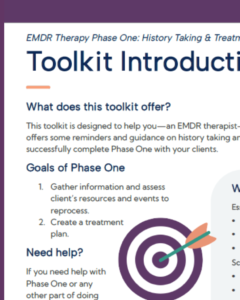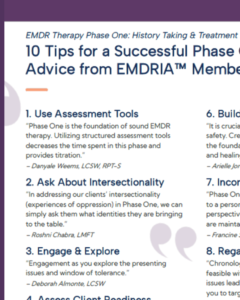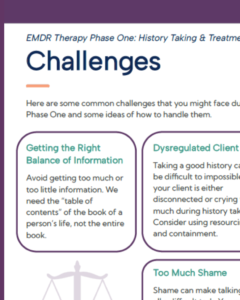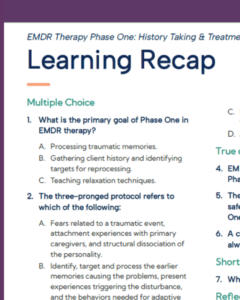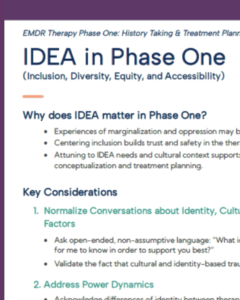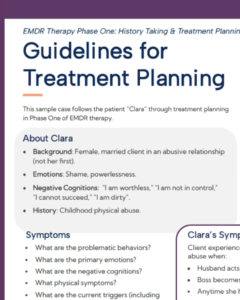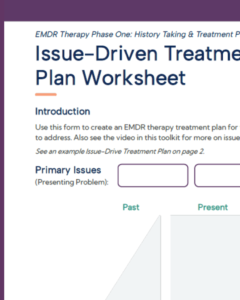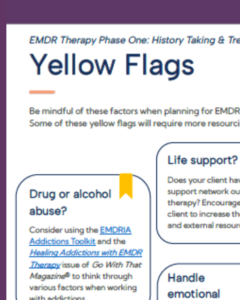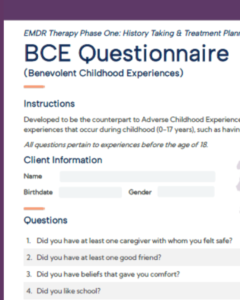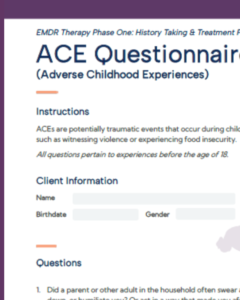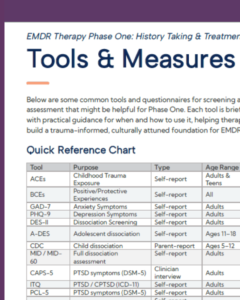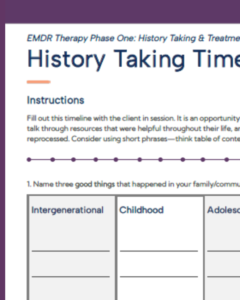Full Packet (Phase 1 Toolkit)
A toolkit designed to help EMDR therapists gather comprehensive client information and assess readiness for EMDR treatment.
Read More10 Tips for a Successful Phase One (Phase 1 Toolkit)
Top phase one EMDR therapy tips such as assess client readiness, create a timeline, build a therapeutic alliance, ask about intersectionality.
Read MoreChallenges (Phase 1 Toolkit)
Here are some common challenges that you might face during Phase One and some ideas of how to handle them.
Read MoreLearning Recap (Phase 1 Toolkit)
Wrap up with a recap of essential concepts and tools to reinforce learning and help you confidently move forward into Phase Two.
Read MoreIDEA in Phase One (Phase 1 Toolkit)
Attuning to IDEA needs and cultural context supports more accurate case conceptualization and treatment planning.
Read MoreGuidelines for Treatment Planning (Phase 1 Toolkit)
This sample case follows the patient “Clara” through treatment planning in Phase One of EMDR therapy.
Read MoreIssue-Driven Treatment Plan Worksheet (Phase 1 Toolkit)
Use this form to create an EMDR therapy treatment plan for the issues the client is hoping to address. Also see the video in this toolkit.
Read MoreYellow Flags (Phase 1 Toolkit)
Factors to keep an eye out for when planning for EMDR therapy with a client. Some require more resourcing or preparation before reprocessing.
Read MoreBCE Questionnaire (Benevolent Childhood Experiences) (Phase 1 Toolkit)
BCEs are favorable experiences that occur during childhood (0-17 years), such as having social support and security.
Read MoreACE Questionnaire (Adverse Childhood Experiences) (Phase 1 Toolkit)
ACEs are potentially traumatic events that occur during childhood (0-17 years), such as witnessing violence or experiencing food insecurity.
Read MoreTools & Measures (Phase 1 Toolkit)
Common tools and questionnaires for screening and assessment for PTSD, anxiety, depression and more during phase one.
Read MoreHistory Taking Timeline (Phase 1 Toolkit)
A visual timeline for organizing client history.
Read More
